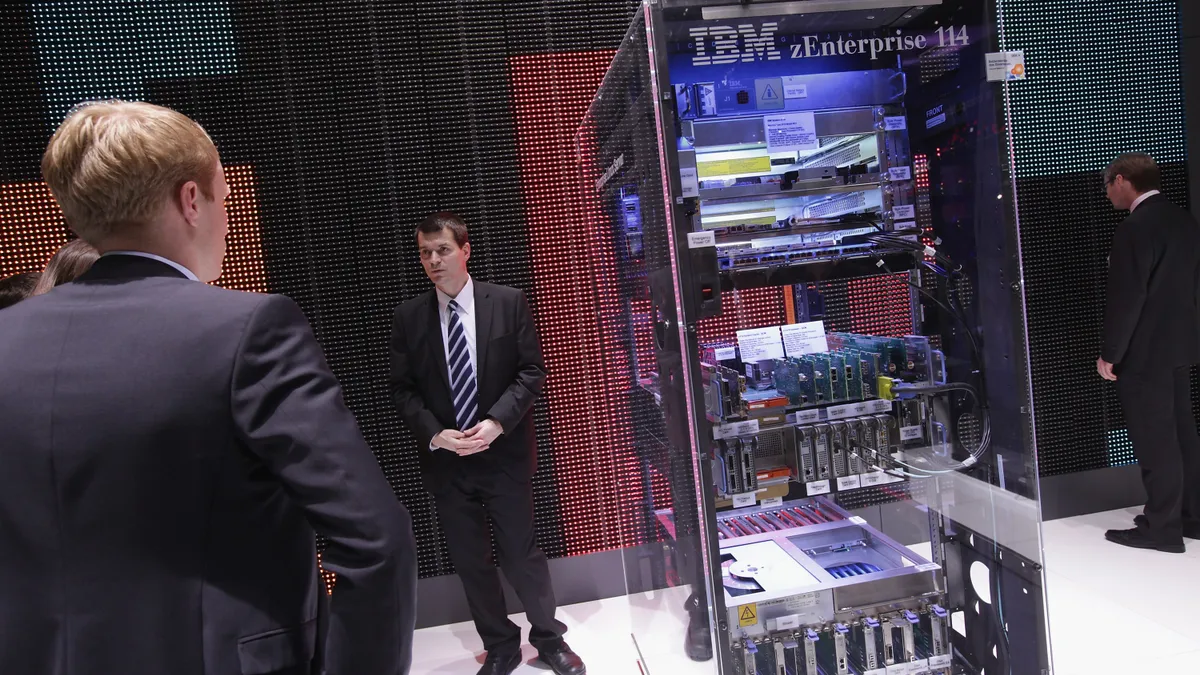Dive Brief:
- Enterprises are expanding mainframe capacity even as they migrate workloads to the cloud, according to an Information Services Group report published Thursday.
- One-third of enterprises using mainframes plan to upgrade processors or storage and 1 in 6 intend to purchase new units in the next three years, ISG found. The research and advisory firm surveyed 200 CIOs, CTOs and other technology executives responsible for on-prem mainframe and mainframe managed services at G2000 companies.
- “Though public cloud adoption continues to grow, it will not totally eclipse mainframes in enterprise IT,” ISG Distinguished Analyst Alex Bakker said. “In fact, mainframe compute and storage requirements are expected to rise, particularly in the form of MFaaS.”
Dive Insight:
As digital transformation strategies mature, cloud cost and security concerns have rekindled enterprise appreciation for the mainframe. Companies with mainframes continue to selectively migrate workloads to the cloud while also shoring up on-prem systems and adding service-based mainframe capabilities.
IBM Z series mainframes remain the machine of choice for more than 90% of enterprises and 59% of respondents are running the z16 line, introduced in 2022, the survey found. IBM and Accenture are the most commonly used vendors for enterprise mainframe services, or MFaaS.
The impetus to modernize has IT executives juggling investments in new technologies with the need to maintain and upgrade existing systems, according to the report. Nearly 60% of respondents said they migrated mainframe applications to cloud in the last three years while more than 40% opted for MFaaS solutions.
“Mainframe demand is being fueled by enterprises’ inability to decommission their legacy infrastructure, often due to conflicting enterprise demands such as the adoption of AI,” Michael Dornan, ISG principal analyst, said. Competing priorities and mainframe challenges will drive enterprises to third-party modernization services to “get the full value from existing investments,” he said.
While enterprises are piloting generative AI use cases in the cloud, many are planning to run workloads on-prem, according to a Kyndryl study published in September. To support compute-hungry large language model tools, IBM will roll out high-capacity processors for mainframe and LinuxOne customers next year.
IBM saw mainframe revenues grow 6% year over year during the three-month period ending June 30. IBM SVP and CFO James Kavanaugh noted the z16 had outperformed expectations, during a July earnings call.
“The picture for mainframe is in some ways rosier than the picture for cloud,” Bakker told CIO Dive in July. “We’re seeing planned growth and spend on mainframe, planned growth and use of mainframe and relatively limited planned retirement of mainframe. Meanwhile, the cloud conversation is all about cost optimization.”
IT executives have learned through experience with cloud that some applications are a better fit for on-prem infrastructure and cost less to run on the mainframe.
“There are a lot of non-scaling workloads running on fully depreciated hardware that don’t need to be in cloud,” Bakker said. “If your data center is relatively modern and doesn't have air conditioners from the 1980s using antique refrigerant, you can run those workloads very cheaply.”














